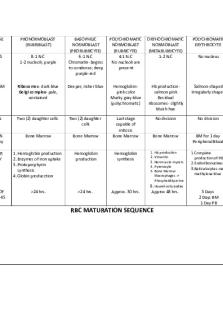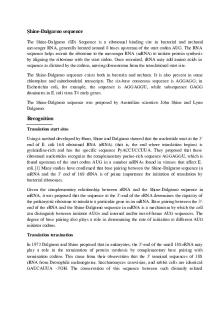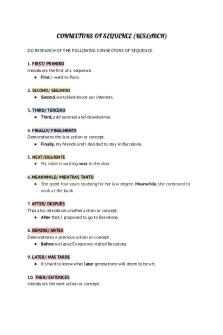Sequence Analysis PDF

| Title | Sequence Analysis |
|---|---|
| Author | Ad Law |
| Course | French Cinema: History, Genre and Style |
| Institution | The University of Adelaide |
| Pages | 1 |
| File Size | 34.8 KB |
| File Type | |
| Total Downloads | 22 |
| Total Views | 178 |
Summary
Sequence Analysis example from Jean de Florette. ...
Description
A1724984
Sequence Analysis
Word Count: 799
Claude Berri’s 1986 film Jean de Florette, based on the novel of the same name by Marcel Pagnol is a picturesque piece of work which highlights the struggles between ‘old’ and ‘new’ or ‘city’ and ‘country’ in France. This film follows Ugolin and Papet’s journey to start a flower planting business, only to be disrupted by a newcomer in their town, Jean. Jean is a city man with an aspiration for ‘authentic’ country life, determined to live off the land and build the broken down property into a home for him and his family. Jean de Florette visualises the tension growing in France from the sixties when the novel was written of the number of immigrants rising on a micro level of fundamentally different people coming together. This writing will analyse the scene towards the beginning of the film in which Jean speaks to Ugolin about his grand plans up until Papet and Ugolin discussing Jean’s plans in town in the next minute. " In the first part of this sequence, we see Jean and Ugolin discussing Jean’s plans for his new property. This section is one of the few scenes which utilises close up shots with quicker cuts, as opposed to the high and long angle shots of the rest of the film with slower cuts which emphasise the peaceful and picturesque nature of country life. These quicker cuts further Jean from the country folk, as well as making his scenes stand out from that of the rest of the film. Jean and Ugolin appear at all times in different shots and on opposite halves of the screen which visualises their differences and physical separation. This is further enhanced by the use of shadows on Ugolin’s face which keep him in the dark of the past and sheltered country life. This lighting choice also foreshadows the dark deeds which will occur as a result of Ugolin and Papet’s desire for tradition and greed. This is juxtaposed by the direct sunlight on Jean’s face in this sequence giving the illusion of his new ideas supported by science and facts as having ‘light’. The use of mise-en-scène reflects the divide between these characters even further with Jean’s new ‘city’ wardrobe behind him contrasting the old shelves and tools behind Ugolin, setting a base for each of the characters reflective of their stances. Both of these actors use their skills to further enhance the divide of the characters. For example, Gerard Depardieu is very lively and energetic as Jean, creating the sense of urgency in the characters strive for the new, whereas as Ugolin appears calm and restrained in his movements in this scene, reflecting his restriction to the norm. Depardieu brings a naturalistic acting technique to the character which opposes Daniel Auteuil’s relatively characterised version of Ugolin, whose expressive face is likened to that of earlier black and white film techniques such as that of the Laurel and Hardy films. These subtle choices help to explain the film’s main theme of France being stuck in the past. " This scene then directly translates to an image of village life. The cut for this scene begins with the explosive hit of the lawn bowls, depicting the drastic switch between Jean’s more modern ideals and the tradition of the country life. The lighter colour palette of this section depicts the idealistic French perception of the country and the past. The initial broader shot encapsulates the country villagers as ‘together’ as opposed to the quick cuts prior which emphasised the separation between the two men. At the end of second minute, the over the shoulder shots juxtapose the previous sequence as Papet and Ugolin are both in shot and hence ‘together’. " The idea that France idealises the past is evident in many ways throughout the film, especially in this scene evident in the fact that the villagers are all under shade, depicting them in the dark of the past. The beautiful natural colours of Provence make a charming view emphasising France’s romantic view on the past especially evident in their film making. However, this beauty, along with the linear narrative of this film typical of French heritage cinema, acts as a mask of idealised France for the darker undertones of murder and greed create an urge to move into the future. The reluctance to accept Jean in the town mimics the political climate of France at the time when the novel was written and reflects the regression to nostalgia due to the increasing unemployment and economic troubles. " Jean de Florette is an incredible example of the ingenious of French cinema which can pay a beautiful homage to early French cinema and the wonders of country life whilst also highlighting the issues of a stagnant society and the importance of acceptance and forward-thinking....
Similar Free PDFs

Sequence Analysis
- 1 Pages

Sequence Analysis of Carol
- 9 Pages

Sequence
- 3 Pages

Booting sequence
- 1 Pages

Abdomen Assessment Sequence-1
- 2 Pages

Telfer Finance Course Sequence
- 1 Pages

Sequence & Activity Diagrams
- 4 Pages

E4E Scope Sequence Answers
- 19 Pages

RBC Maturation Sequence
- 1 Pages

PPE-Sequence Protective equip
- 3 Pages

Jetstream Beginner Scope&Sequence
- 25 Pages

Just in Sequence Zusammenfassung
- 12 Pages

Shine-Dalgarno sequence
- 2 Pages
Popular Institutions
- Tinajero National High School - Annex
- Politeknik Caltex Riau
- Yokohama City University
- SGT University
- University of Al-Qadisiyah
- Divine Word College of Vigan
- Techniek College Rotterdam
- Universidade de Santiago
- Universiti Teknologi MARA Cawangan Johor Kampus Pasir Gudang
- Poltekkes Kemenkes Yogyakarta
- Baguio City National High School
- Colegio san marcos
- preparatoria uno
- Centro de Bachillerato Tecnológico Industrial y de Servicios No. 107
- Dalian Maritime University
- Quang Trung Secondary School
- Colegio Tecnológico en Informática
- Corporación Regional de Educación Superior
- Grupo CEDVA
- Dar Al Uloom University
- Centro de Estudios Preuniversitarios de la Universidad Nacional de Ingeniería
- 上智大学
- Aakash International School, Nuna Majara
- San Felipe Neri Catholic School
- Kang Chiao International School - New Taipei City
- Misamis Occidental National High School
- Institución Educativa Escuela Normal Juan Ladrilleros
- Kolehiyo ng Pantukan
- Batanes State College
- Instituto Continental
- Sekolah Menengah Kejuruan Kesehatan Kaltara (Tarakan)
- Colegio de La Inmaculada Concepcion - Cebu


